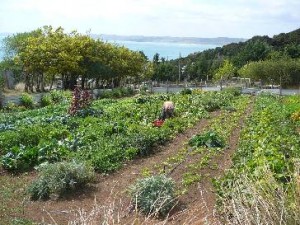
A new study has concluded that the Raglan “tribe” is top in New Zealand for sustainability. The “North Shore” type finishes last in the sustainability stakes. The study draws on the book 8 Tribes: The Hidden Classes of New Zealand by Chris Brown and Jill Caldwell, and gauges for the New Zealand Footprint Project the ecological impact of eight different Kiwi “tribes”. The tribes were defined by income and lifestyle, and labelled according to their stereotypical state of mind.
The two papers released today by the Royal Society of New Zealand explore how many people the country could support sustainably – and how comfortably. They found that if the entire world was to live like a New Zealander, we would require more than two planets to sustain us.
The research covers – climate change, food production, water quality, native biodiversity, transport and fisheries – where sustainability became an issue and could constrain the country’s ability to provide wellbeing to its residents.
In terms of “Earth shares” – calculated by dividing the world’s total amount of arable land by the world population – the North Shore tribe would need nearly four Earth planets to sustain their lifestyle, compared with a fair Earth share of one. The New Zealand average sat at just over two.
With an annual household income of $130,000 and characterised by “preferences for high levels of consumption, travel and large houses”, the North Shore tribe ranked the highest of the groups in resource over-use, followed by the Remuera and Grey Lynn tribes.
The best ranked tribes – Otara and Raglan, with scores of around 1.7 – were still rated worse than the global average in sustainable living.
The reports are: The Sustainable Carrying Capacity of New Zealand and Constraints to New Zealand’s Sustainable Well-Being.
The society’s chief executive, Dr Di McCarthy, said the papers offered a strategy on how to operate within the constraints of our resources.
And despite the popular view, the papers found that achieving sustainability was not as simple as a trade-off between our environment and economy.

